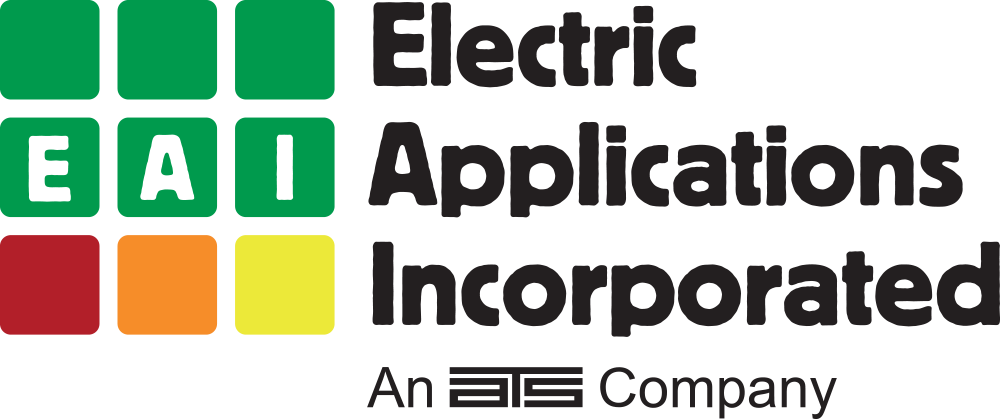February 2012
The PHEV Grid Interaction Evaluation project began with conducting a demand and energy study with a converted plug-in hybrid electric vehicle (PHEV) under bidirectional charging condition at ECOtality North America (ECOtality) in Phoenix, AZ. The bidirectional charging condition had the capability of direct current (DC) fast charging and discharging. The impact of this DC fast charging and discharging on the charging building energy demand profiles as well as on its vehicle energy storage system (ESS)’s life were evaluated. The analysis of the potential advantage of utilizing the vehicle ESS to facilitate the economics of pricing differences between on- and off-peak hours and further as energy storage linked to a smart grid was included as well.To further demonstrate the PHEV and electric vehicle (EV) bidirectional electricity exchange potential for reducing the electrical power demand of the charging facility, ECOtality expanded a previous Idaho National Laboratory (INL) analysis[2] on PHEV demand and energy cost study by introducing a bidirectional DC fast charging and discharging profile to a converted PHEV (Appendix A). The use of delayed charging as well as vehicle-to-grid (V2G) and vehicle-to-building (V2B) operations were also evaluated from the aspects of three independent identities: utility, business building and vehicle owner. The study indicated a V2G scheme could be beneficial to the utility, especially if it can redistribute and re-sell the electricity saved by the business site to other end users. Other potential benefits come from the value in reduction of peak energy demand, potentially foregoing the need to turn on a peaking plant or even build one at all, and the ability to store intermittent renewable energy. It is of only marginal value to the business owner in the current cost scheme. Conversely, V2B is very favorable to the business owner because the direct electrical costs are lowered in a controllable manner. However, it would only be especially attractive to a utility if the difference between on- and off-peak rates were very large, but would be useful in allowing peaking plant electricity to be used elsewhere. For both scenarios, the vehicle owner would require compensation ($0.59 per kilowatt hour (kWh)) in order not to lose money on the proposition (because of ESS replacement). The study recommended the vehicle owner must have ultimate control over the usage of the vehicle battery pack.An A123/Hymotion ESS was used in the conversion of a MY2004 Toyota Prius, after the vehicle completed 160,000 miles fleet testing in the US Department of Energy (DOE) Advanced Vehicle Testing Activity (AVTA) program, from a traditional hybrid electric vehicle (HEV) to a PHEV. The conversion included configuring the converted vehicle to be fast charge-capable using a bidirectional fast charger and an automatic charging control system. The bidirectional vehicle fast charging events and battery performance were monitored and recorded through a GridPoint data logging system. Appendix B details the hardware and software infrastructure needed. The on road test of the converted Hymotion Prius PHEV was conducted following the DOE’s AVTA PHEV Accelerated Test Procedure[3] with DC fast charging and discharging conditions for a total of 1,000 miles. The test produced data on the effectiveness of bidirectional charging and DC fast charging in reducing electrical power demand and energy costs at the charging building. To the extent practical, interface with “smart metering” was demonstrated. Proper operation of data logger and controls was also validated.Two laboratory-based test cycles were developed to evaluate the impact of DC fast charging and discharging operation on the performance of PHEV ESSs. The test cycles were designed to simulate the demands on the conversion ESSs solely. The first “Hymotion” test cycle simulated bidirectional fast chargeable PHEV operation of a Hymotion PHEV Prius that was converted using a 4.7 kWh A123/Hymotion lithium-ion (Li-ion) ESS. The A123/Hymotion ESS (supplement pack) was operated in addition to the original vehicle Nickel-Metal Hydride (NiMH) ESS. It provided propulsion power that allowed the vehicle to travel in all-electric mode (at moderate speeds and accelerations) up to 15 miles in a charge-depleting (CD) mode but was not recharged at all during vehicle operation. The second “Energy CS” test cycle simulated the operation of an Energy CS PHEV Prius vehicle in which the standard NiMH ESS was replaced with a 10 kWh, Li-ion ESS (replacement pack) from Energy CS. It provided power for acceleration and accepted power from regeneration in a similar manner to the original NiMH unit, and can provide the additional power required to achieve a CD range of 30 miles (again, at moderate speeds and acceleration).
Two Version 2 (V2) 4.7 kWh, A123/Hymotion ESSs were purchased and cycled in the laboratory for 6 months under each test cycle. Note: as Energy CS was not able to provide a 10 kWh ESS, a 4.7 kWh Hymotion ESS was used for the Energy CS simulation, but the Energy CS test cycle was re-scaled accordingly.
An A123/Hymotion ESS pack was cycled under the Hymotion test cycle for six months at an ambient temperature of 24°C (75°F). During initial operation it was found that the thermal management system with the ESS was unable to maintain a suitable operating temperature. As a result, the system was provided with the Hymotion pack needs to be improved to avoid high ESS operating temperatures. With an average ESS temperature of 40°C (104°F), the results suggest that this ESS could provide a daily demand reduction service for 3.6 years, as well as 40,389 miles of simulated driving before the battery capacity drops below 80% of nominal. This equates to the delivery of 2,400, 100% DOD (Depth of Discharge) capacity turnovers.
A second A123 pack (10 kWh, equivalent) was operated under the simulated Energy CS PHEV/demand reduction duty at an ambient temperature of 24°C (75°F) for 6 months. With an average ESS temperature of 33°C (91°F), the results suggest that this ESS could provide a daily demand reduction service for 5 years, as well as 67,902 miles of simulated driving before the battery capacity drops below 80% of nominal. This equates to the delivery of 2,800, 100% DOD capacity turnovers.
In addition to the full-size ESS testing, smaller strings of the cells that make up the A123/Hymotion ESS were assembled and cycled at ambient 24°C (75°F) and 50°C (122°F) under the Hymotion profile. Cycling a three-cell string at 24°C (75°F) under the simulated Hymotion/demand reduction profile provided the equivalent of 9.4 years of demand reduction service, as well as 102,826 miles of simulated driving (6,110, 100% DOD capacity turnovers). The three-cell string, cycled at 50°C (122°F), provided only 27% of the lifetime energy delivered by the 24°C (75°F), three-cell string. A three-cell string operated under the simulated Energy CS/demand reduction profile at an ambient temperature of 50°C (122°F)obtained a similar result (1,100, 100% DOD capacity turnovers) to that recorded for the cells cycled at 50°C (122°F)under the Hymotion conditions (1,650, 100% capacity turnovers). The extent of this reduction is of significant concern and highlights the importance of having an effective thermal management system for Li-ion powered HEVs, EVs, and PHEVs.
Storing the evaluated Li-ion cells at elevated temperatures raised the same concern as for battery performance under elevated temperatures. Storage at 52°C (126°F) for four months at 50 and 100% SOC resulted in a capacity loss of 10% (2.5% per month). Under Hymotion test cycle conditions at 24°C (75°F) for four months, the capacity loss was only 0.72% (0.18% per month). Obviously, high-temperature storage can be very detrimental to the performance of Li-ion batteries. This result again demonstrates the importance of adequate thermal management with Li-ion battery systems in PHEVs, HEVs and EVs.
The tear-down analysis at the Commonwealth Scientific and Industrial Research Organization (CSIRO), in Australia, of failed Li-ion cells operated under simulated Hymotion duty at 50°C (122°F), suggested that the carbon anode was responsible for the cell failure. Thecathodes from the failed cells were in an excellent and equal condition to that of the new cells. If this behavior is ‘across the board’ for Li-ion technologies, it is obvious that improved anode materials are required to achieve acceptable high-temperature performance.
Finally, the dynamometer fuel economy and emissions testing was conducted on the converted Hymotion Prius at the Advanced Powertrain Test Facility (APTF), of the Argonne National Laboratory (ANL), using the AVTA PHEV test procedures[4]. The converted vehicle gave an average of 155.2 miles per gallon (mpg) fuel economy with air conditioning (A/C) off and 112.9 mpg fuel economy with A/C on when driven in CD mode with a cold start. With a hot start, in CD mode, the vehicle delivered 170.3 mpg fuel economy with A/C off and 151.7 mpg with A/C on. Under charge sustaining (CS) mode, the vehicle average fuel economy reached 53.6 mpg with A/C off and 43.4 mpg with A/C on.
[1] Refer to: X.Sun, et al. Development and Testing of an UltraBattery-Equipped Honda Civic Hybrid
[2] A. Masters, J. Wishart and J. Francfort, Tacoma Power/AVTA PHEV Demand and Energy Cost Demonstration Analysis Report, INL/EXT-10-18207, May, 2010.
[3] D. Karner, R. Brayer, D. Peterson, M. Kirkpatrick and J. Francfort, AVTA-PHATP01 – Plug-in Hybrid Electric Vehicle Accelerated Test Procedure, Plug-in Hybrid Electric Vehicle Integrated Test Plan and Evaluation Program, p360, INL/EXT-01-12335, March, 2007.
[4] D. Karner, R. Brayer, D. Peterson, M. Kirkpatrick and J. Francfort, AVTA-PHTP07 – Implementation of SAE J1634 May1993 – “Electric Vehicle Energy Consumption and Range Test Procedure”, Plug-in Hybrid Electric Vehicle Integrated Test Plan and Evaluation Program, p275, INL/EXT-01-12335, March, 2007

